Dogs are loyal, loving, and wonderful companions, but they can also leave behind an unpleasant smell on furniture. This odor is often caused by the glands located near their anus and skin, which can secrete an oily substance that can stick to furniture and be difficult to remove.

Not only can this scent be unpleasant for humans, but it can also attract dogs back to the same spot, exacerbating the problem.
In this article, we’ll provide tips for getting rid of dog gland smell on furniture and preventing it from coming back, so you can enjoy a clean, fresh-smelling home with your furry friend.
Causes of Dog Gland Smell on Furniture
The smell of dog gland on furniture is often caused by the two types of glands present in dogs: anal and sebaceous glands.
The anal glands, located on either side of the dog’s anus, secrete a strong, musky odor which is used to indicate territory or communicate with other dogs. When canines sit or lie down on furniture pieces, this secretion can linger and produce an unpleasant scent that remains after they are gone.
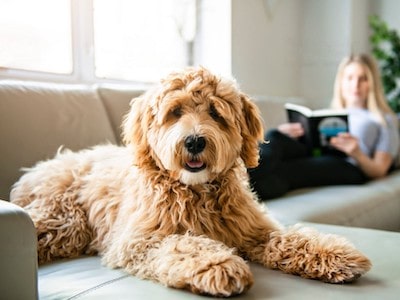
However, the sebaceous glands located all over a dog’s skin can produce an oily substance that helps keep their skin and coat healthy.
If too much oil is produced or if grooming is not done regularly, these oils may accumulate on furniture over time and cause a foul smell due to oxidation.
Apart from glandular problems, dogs can leave hair, dander and other body fluids on furniture which can add to the smell. All these factors together make it hard to get rid of a lasting odor.
Tips for Getting Rid of Dog Gland Smell on Furniture
If you’re struggling with dog gland smell on your furniture, don’t despair! There are several things you can do to eliminate the odor and prevent it from coming back. Here are some tips:
- Vacuum regularly: Vacuum your furniture regularly to remove any hair, dander, or debris that could be contributing to the smell. Use a vacuum cleaner with a pet hair attachment to ensure that you’re getting all of the fur and debris.
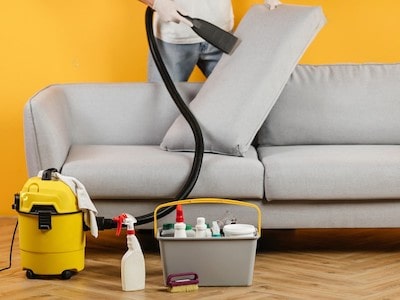
- Clean with pet-friendly cleaners: Use a pet-friendly cleaner to clean your furniture, as many regular cleaners contain harsh chemicals that could be harmful to your pet. Look for products that contain enzymes, which are designed to break down proteins and eliminate odors.
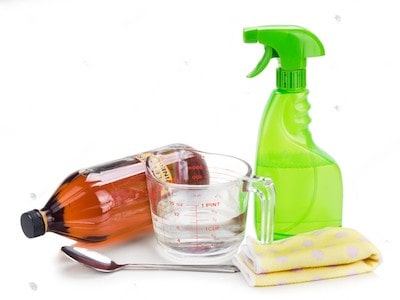
- Use an enzymatic cleaner: If the odor is particularly strong, you may want to use an enzymatic cleaner specifically designed to break down the proteins in the gland scent. These cleaners are available at most pet stores and can be very effective.
- Try baking soda: Baking soda is a natural deodorizer that can help absorb odors. Sprinkle it on your furniture and let it sit for a few hours before vacuuming it up. This can help eliminate any remaining odors.
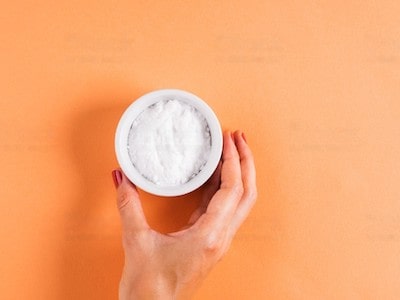
- Hire a professional: If the smell is really persistent, consider hiring a professional cleaning service to deep clean your furniture. They will have specialized equipment and cleaners that can effectively remove even the strongest odors.
By following these tips, you can eliminate dog gland smell from your furniture and keep your home smelling fresh and clean.
Preventing Dog Gland Smell on Furniture
Preventing dog gland smell on furniture is easier than trying to eliminate it after it has already set in. Here are some tips to help you prevent dog gland smell from building up on your furniture in the first place:
- Groom your dog regularly: Regular grooming can help reduce the amount of oils and scent transferred to your furniture by preventing excess oil buildup on your dog’s skin and coat. To achieve this, brush them regularly, give them baths as needed and visit a professional groomer when necessary.
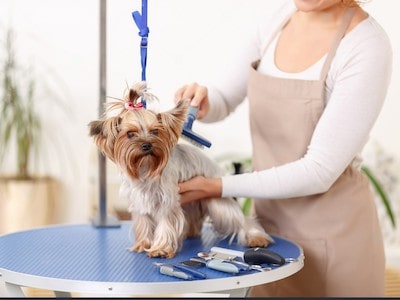
- Feed your dog a healthy diet: Eating a nutritious diet can help reduce gland secretion, as well as enhance your dog’s overall wellness. Talk to your vet to determine the most suitable diet for your pet.

- Use slipcovers or blankets: Consider using pet-friendly slipcovers or blankets for your furniture, which can be washed in the event of any oils or odors left by your dog.
- Designate a pet bed: Encourage your dog to sleep in its designated pet bed instead of on the furniture; this will help prevent oils and scents from being transferred to your furniture.
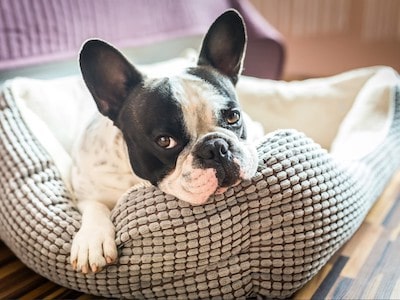
- Clean up accidents promptly: Clean up any accidents your pet has on the furniture promptly with a pet-friendly cleaner, to help prevent any odors from setting in and becoming hard to remove.
FAQs
No, it’s recommended to use pet-friendly cleaners that contain enzymes, which are designed to break down proteins and eliminate odors without harming your pet.
Yes, enzymatic cleaners are safe for pets when used as directed. However, it’s important to avoid letting your dog ingest the cleaner or come into contact with it while it’s still wet.
It is suggested that regular grooming be done to avoid an excessive accumulation of oils on your dog’s skin and coat, which can decrease the amount of oils and scent transferred onto furniture. Speak with your veterinarian to decide the most suitable grooming plan for your dog.
While dog gland smell on furniture is unpleasant, it’s not typically harmful to humans. However, it can be a sign that your furniture is dirty and needs to be cleaned to prevent the buildup of harmful bacteria and allergens.
Using slipcovers or blankets can help protect your furniture from damage, as well as make it easier to clean and remove any odors that your dog may leave behind.
Conclusion
Dealing with dog gland smell on furniture can be frustrating, but it’s important to remember that it’s not impossible to eliminate the odor and prevent it from coming back.
By following the tips outlined in this article, such as using pet-friendly cleaners, regular grooming, and using slipcovers or blankets, you can help prevent glandular odor from building up on your furniture.
Remember to clean up any accidents promptly and consult with a professional cleaning service if the odor is particularly strong. With a little effort and consistency, you can keep your home smelling fresh and clean, even with a furry friend around.

Ellis is a retired veterinary technician and full-time contributor at DogLovesBest. He likes writing about pet health care tips and reviews the products that are useful for fidos on a daily basis.
Ellis also guardians a Siberian husky, Nova, and a cat named Shilly. They all live happily with his wife Ammy, and both the dogs on a seaside apartment in Queens, NY.
